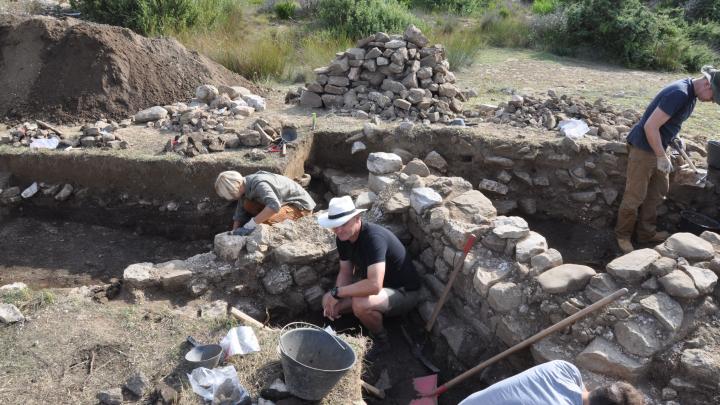Archaeologists have discovered traces of buildings erected by immigrant settlers from Dalmatia – a province of the Roman Empire – to protect themselves from Germanic tribes on the island of Rab in Croatia. Discoveries attesting to population movements at such an early period are rare in archaeology.
The discovery was made as part of a joint project between the Institute of Archeology of Cardinal Stefan Wiesinski University in Warsaw and the Institute of Archeology in Zagreb.
“This year’s season has brought very surprising and important discoveries in the context of the entire eastern Adriatic region” – Professor Fabian Wilk, who leads the research on the Polish side, said the Croatian coordinator is Dr Anna Konstra.
This year, archaeologists carried out excavations inside an ancient Roman rural villa complex, which existed a few years ago thanks to GPR research in Podsilo Bay in the north of the island. So far, researchers believe that the discovered buildings come only from the 1st and 3rd centuries AD
“It turned out that the area of u200bu200bthe settlement we studied was also inhabited much later, after the fall of the Western Roman Empire. And in the remains of the already destroyed villa, a temporary wooden architecture was erected. It was a complete surprise for us ”- the professor noted. welcome.
Who created new but primitive facilities? Professor Welk referred to the barbarian tribes, including the island of Rab.
As pointed out by Professor. Wilke, this concept of the origin of the new settlers is confirmed by discoveries of Byzantine and Gothic coins from that time discovered during excavations. He added that the new settlers adapted the partially destroyed villa according to their needs and only made the necessary repairs by erecting wooden walls and ceilings on wooden poles. Only many subsequent punctures have survived to our time.
Despite somewhat primitive conditions, they maintained a relatively high standard of living. Among the remains of the temporary chambers, we found only African imported vessels for oil, wine, glass and many bronze items, including many coins ”- the archaeologist stated. In his opinion, all this testifies to the intense contacts of the then inhabitants of the island of Rab with the African Roman provinces and with other parts of the Mediterranean.
It is possible that the island, which is a kind of sanctuary, experienced another great migration.
“In the seventh century, a very temporary repair of the villa complex was again carried out. Everything indicates that we are here again dealing with another wave of settlers – this time the settlers – immigrants, perhaps seeking refuge on the island from the wave of the Slavs or the Avars and then the storming of the Balkans “- the world thought.
According to the professor. Wilka The settlement period dating back to the seventh century on the island of Rab is unique in the archaeological world. This is the first discovery of its kind in the northeastern Adriatic region. It gives insight into the migration processes that took place at the end of antiquity and the beginning of the Middle Ages, which are unique in archaeological materials “- emphasizes.
This is not the only significant discovery made by researchers in the past on the island of Rab this year. Another huge building was found in the area of the western part of the bay thanks to radar scans. They were most likely lined with mosaics, as evidenced by the finds of many small pieces (small cubes that make up the mosaic) found on the floor.
Professor A. welcome.
The researcher stressed that the most interesting discoveries of the Polish-Croatian team will be made available in the future to tourists who visit the island in large numbers every year.
The island of Rab was strategically located on the road map of Rome. For this reason, Emperor Octavian Augustus (63 BC – 14 AD) built a port and a walled city on the island, some of which have been preserved in the form of remains to this day around the modern city of Rab. The main exports from the island were ceramic products, possibly olive oil and wine, and possibly fish as well. Instead, high-quality wine glassware and high-quality terra sigillata wares were imported, mainly from Tunisia, and in smaller quantities also from the Middle East, according to several years of research by an international team.
The research on Rab Island, which has been conducted for several years, is funded by the National Science Centre, the Lobar Municipality on Rab Island, the Institute of Archeology in Zagreb and the Systemic Risk Center of the Artes Liberales College of Warsaw University (PAP).
Author: Szymon Zdziebijowski
SZZ / ECC /

“Music specialist. Pop culture trailblazer. Problem solver. Internet advocate.”







